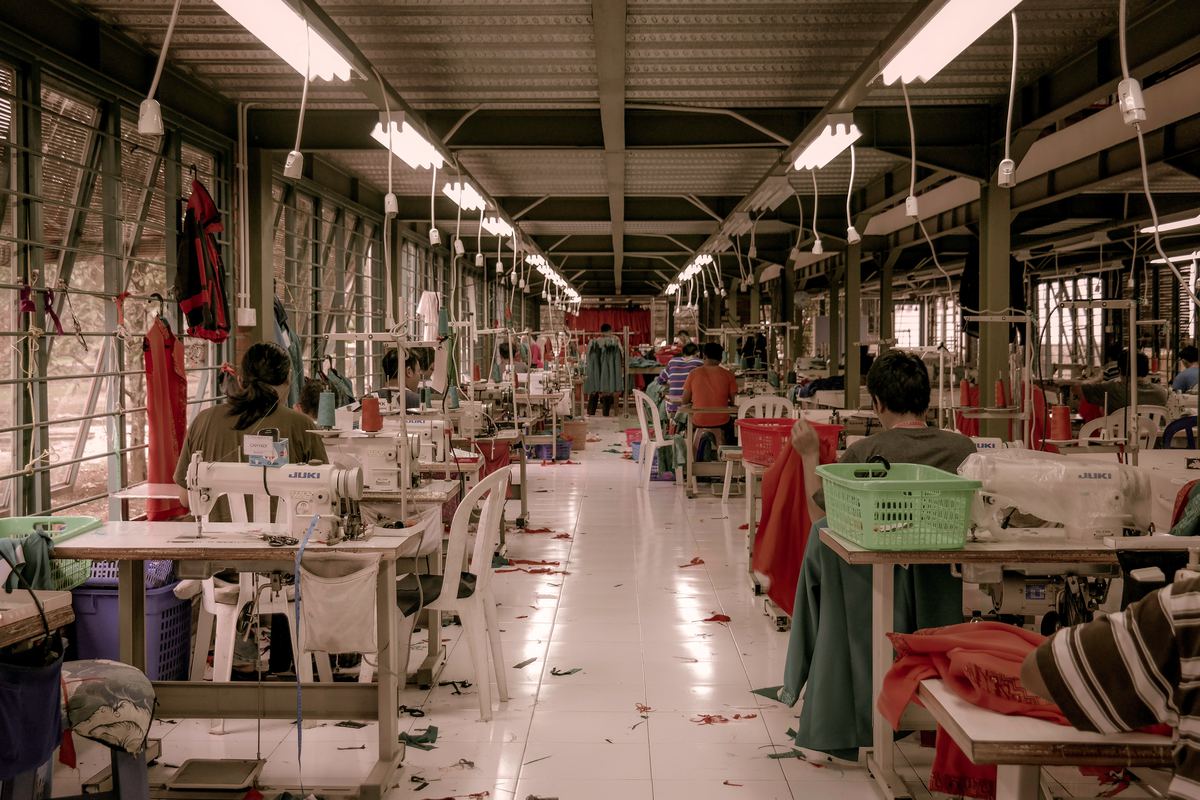Fast fashion appeals to individuals who want to keep up with trends but lack the time or money to do so on a regular basis.
Shirts for $3, jeans for $15, skirts for $7 and jewelry for 50 cents make fashion accessible and low-risk. People can have packages delivered filled with clothes that only cost $100-$200 in total.
Soon, these packages are delivered with increasing frequency: every other month, then twice a month and finally once a week.
It’s an addiction. An addiction not only to fast fashion, but to instant gratification as well. A seemingly harmless shopping obsession becomes linked to an unsustainable addiction and to instant gratification, an addiction society that the fast fashion industry has not only manufactured but supported.
One of the consequences of the prevalence of fast fashion is its impact on the environment. Fast fashion companies have never had a good reputation for sustainability, and caring for the environment is not the top priority on their to-do list.
The combination of online shopping and marketing strategies from fast fashion brands has continued to feed the need for instant gratification. Instant gratification is apparent in the temptation and tendency to buy new clothing items constantly because individuals crave the rush of dopamine. Additionally, receiving that gratification for a low price makes it even more appealing. The pressure to remain fashionably on trend and stylish is a mindset that companies, social media and influencers aggressively market.
Additionally, the fast fashion industry can use algorithms to scan social media for micro-trends and use software to produce clothes that give no credit to the designer and are destined to be forgotten and thrown in landfills. Technological development has supported fast fashion’s ability to produce clothing at a high rate, without spending time designing the items.
The company Shein is a prominent example of this business style. Founded in 2008 by Chris Xu from China, Shein now ships to more than 220 countries and independent regions. The China-based company is worth $100 million, more than the other leading fast fashion brands, H&M and Zara, combined. Shein’s mass manufacturing process and the incessant demand for new designs mean the company produces over 10,000 new products daily. It runs off the “test and repeat” model; just 6% remains in stock for over 90 days.
Shein relies on third-party suppliers in China to produce a small amount of clothing, 50-100 items, and if an item does well there are more batches of the item produced. However, if the item does poorly, they immediately discontinue the line. Their vast international shipping routes, covering 150 countries worldwide, make it hard to imagine the emissions for deliveries and returns; the company produces 6.3 million tons of carbon dioxide per year. Since they produce clothing by the masses, most of the time, the items are not high quality, which establishes the problem of what has become known as “Throwaway Fashion,” or discarding clothes after owning them for a short time. These items usually end up in landfills along with returned items. Tossing returned items into the landfill is cheaper than putting them back into circulation, which is precisely what Shein does.
The company not only creates massive amounts of new clothing items daily, but also advertises them deliberately to get the consumer’s attention. Social media plays a vital role in fast fashion’s success by creating a specific culture. Fast fashion brands partner with social media companies to design targeted consumer ads.
For example, an individual shopping on a high-priced brand, like Aritzia, will see similar items advertised for a fraction of the price by Shein’s direct marketing. Advertisements also hide their strategies to get the users’ attention and encourage them to spend impulsively.
An ad may say, “ONE TIME ONLY FLASH SALE! BUY NOW BEFORE THESE HOT PICKS ARE GONE!” It gets the consumer’s attention, they immediately click on the link and through a simple sentence in all capitalized letters, Shein’s marketing team captures another victim.
Social media has also established an unhealthy culture that boosts fast fashion consumption with a trend known as “haul culture.” These are videos where influencers record themselves sharing the massive amounts of clothing they purchased. While these videos are fun to watch, they promote unhealthy ideas about clothing consumption, encouraging viewers to overconsume. Fast fashion brands often subtly pay influencers to create these videos, hoping viewers will find them inspiring and follow suit. Companies also support the idea of hyper trends, which are styles that become popular quickly but go out of style sometimes faster. So, while fashion trends used to be defined by the decade, they now only stick around for a year or even just a month.
As more people give in to their urge for instant gratification, more clothes are bought and thrown away after only wearing them once or twice. Globally, 92 million tons of textiles are wasted every year, which is equivalent to a truckload of clothes being dumped into a landfill every second. These textiles can’t decompose, resulting in plastic fibers and toxic dyes polluting the oceans and soil. The mass production of clothes is also significantly harming the environment. The fashion industry is the second-largest consumer of water and, coincidentally, the world’s second-largest water polluter. The water left over from dyeing the clothing often gets poured into ditches, streams or rivers. Fast fashion may be cheap to consumers, but someone is paying the real price somewhere else. Reaching sustainable fashion will not be possible if individuals succumb to their need for instant gratification, however, hope does exist for the future of fashion and the world.
There are several other resources to obtain trendy clothing and express yourself than through garments that are destructive to the environment and society. A growing area of fashion exists that does not rely on Shein’s fashion production model. Sustainable fashion designers need to be the new trend of the generation. Thrifted, secondhand and resale clothing are becoming increasingly popular, but individuals still face the temptation to return to the fast fashion companies they know and love.
There is a lack of regulation from governments across the globe, which gives fast fashion companies the incentive to continue to grow and harm the environment, exploit sweatshop workers, and emit toxic emissions.
The United Nations Environment Programme (UNEP) and the Global Fashion Agenda are spearheading a consultation surrounding the fashion industry to create a path that will be net positive. UNEP also wants to create a method of incorporating sustainability and circularity in the textile value chain while guiding the narrative to look at the role of consumption with a focus on sustainable fashion communication.
Ending the damaging cycle of fast fashion will take the collective effort of governments, businesses and, most importantly, each individual person. You can move in the right direction by shopping secondhand, donating worn clothing to thrift stores and embracing fashion that will express your identity without harming the planet and those around you.
After all, having someone say you have vintage style is one of the best compliments you can receive in the 21st century.







